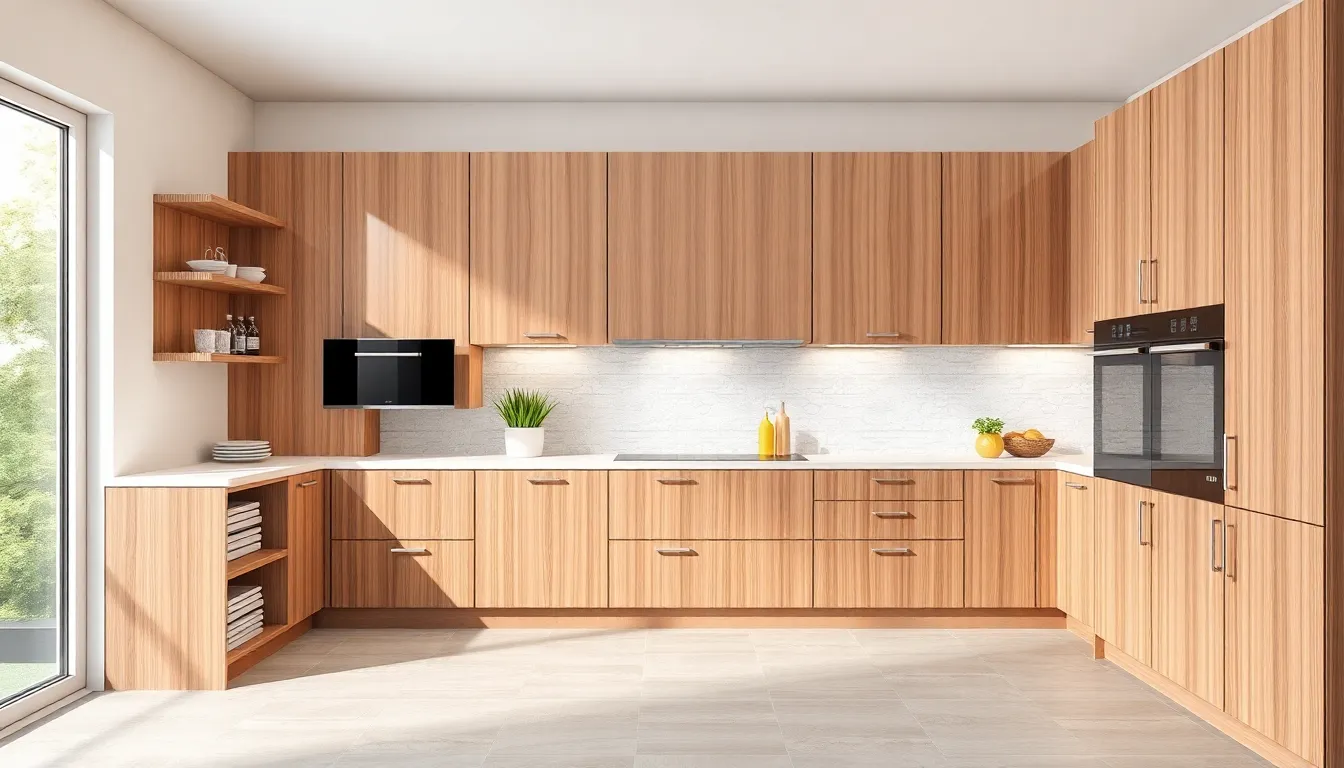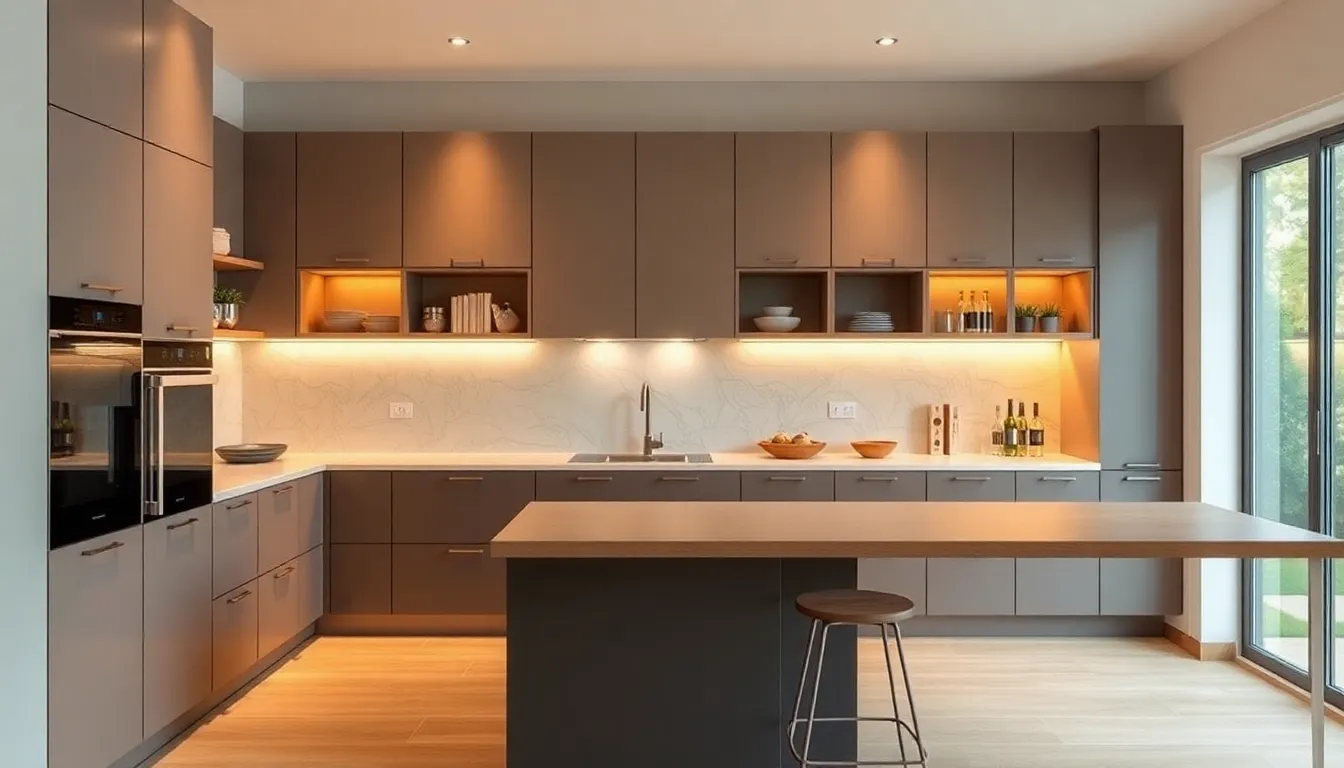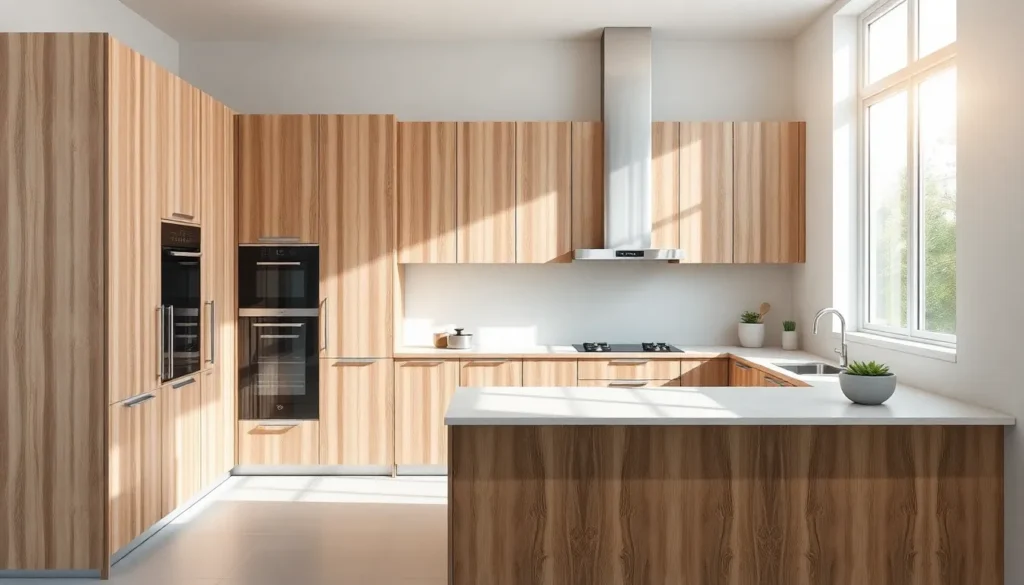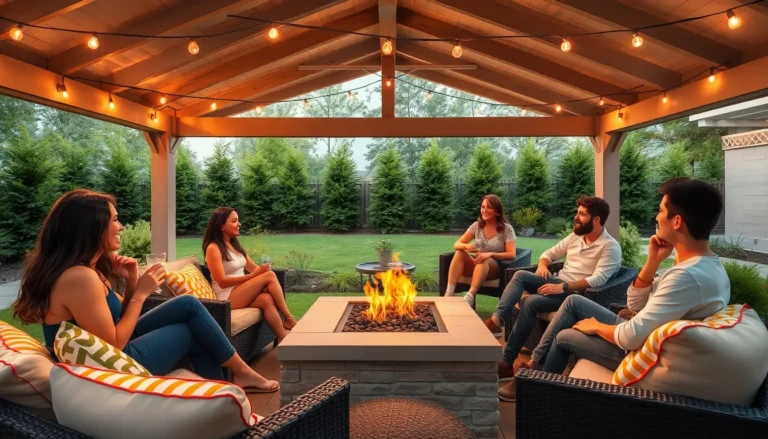Table of Contents
ToggleIn the world of home design, modular kitchens are the superheroes we never knew we needed. With their sleek lines and customizable features, they transform the chaos of cooking into a culinary masterpiece. Gone are the days of cramped spaces and mismatched cabinets. Instead, these kitchens offer a blend of style and functionality that even the most discerning chefs would envy.
Imagine whipping up a gourmet meal while your kitchen effortlessly adapts to your every need. Whether it’s a tiny apartment or a sprawling mansion, modular kitchens fit like a glove. They maximize space and minimize clutter, all while making you look like a design genius. So if you’re ready to upgrade your cooking experience and impress your guests, modular kitchens might just be your new best friend.
What Are Modular Kitchens?
Modular kitchens consist of pre-fabricated cabinets and units that fit together seamlessly. They offer flexibility, as homeowners can customize designs, materials, and layouts to suit individual needs and preferences. Made from various materials like plywood, MDF, and laminate, these kitchens balance style and durability.
Storage solutions in modular kitchens include cabinets, drawers, and shelves that optimize space effectively. Many designs incorporate smart storage options, such as pull-out racks and corner units. These features maximize efficiency, showing how functional setups enhance daily routines.
Installation is simplified, thanks to the plug-and-play approach of modular kitchens. This aspect reduces installation time significantly compared to traditional kitchen setups. Additionally, modular kitchens allow easy updates or reconfigurations, adapting to changing tastes or lifestyle needs.
Aesthetic appeal remains a core component of modular kitchens. Options range from modern minimalistic designs to warm traditional styles, catering to diverse tastes. Vibrant colors and textures make these kitchens visually stunning, playing a vital role in home aesthetics.
Cost-effectiveness also characterizes modular kitchens. They combine quality craftsmanship with affordability, providing a stylish upgrade without breaking the bank. Potential buyers appreciate that modern architectures and layouts can improve property value.
Overall, modular kitchens represent a contemporary solution for home cooking spaces. Their combination of functionality, style, and customization makes them an ideal choice for anyone seeking an efficient kitchen design.
Benefits Of Modular Kitchens


Modular kitchens offer numerous advantages that contribute to functional and beautiful home design. Their versatile nature allows for efficient use of space, enhanced aesthetics, and unparalleled customization.
Space Optimization
Space optimization stands as a primary benefit of modular kitchens. These kitchens utilize pre-fabricated units that fit together seamlessly, maximizing every inch of available space. Smart storage solutions like pull-out racks and corner units allow homeowners to make the most of small and large areas alike. By incorporating features such as vertical cabinets, homeowners can store more items without sacrificing accessibility. Effective organization reduces clutter, creating a more functional cooking environment. Overall, modular kitchens transform areas into efficient culinary spaces that cater to individual needs.
Aesthetic Appeal
Aesthetic appeal is integral to the allure of modular kitchens. Homeowners enjoy a wide range of design options, from sleek contemporary styles to warm traditional looks. High-quality materials ensure that the kitchen not only performs well but also looks stunning. Various color palettes and finishes allow for personal expression within the space. Integrating modern elements, such as minimalist hardware, enhances the visual impact without overwhelming the overall design. Consequently, modular kitchens serve as stylish focal points that elevate the entire home’s interior.
Customization Options
Customization options in modular kitchens provide homeowners with unique design possibilities. They can select various layouts, materials, and finishes to tailor the kitchen to their personal preferences. Modular components allow for rearrangement, making it easy to adapt to changing needs or tastes. Homeowners can incorporate specific features, such as breakfast bars or additional shelving, that reflect their lifestyle. Flexibility in design fosters a kitchen environment that aligns with individual culinary habits. Overall, customization empowers homeowners to create their ideal cooking spaces.
Popular Materials For Modular Kitchens
Modular kitchens utilize various materials to enhance both functionality and aesthetics. The choice of material influences durability, maintenance, and overall style.
Wood
Wood remains a popular choice for modular kitchens due to its timeless appeal. It offers warmth and can be crafted into various styles, from rustic to contemporary. Quality wood provides strength and longevity, making it a smart investment. Teak and oak are two examples of hardwoods frequently used for cabinetry and surfaces. Customization options abound, allowing homeowners to choose finishes that match their personal style. Additionally, wood can be treated for enhanced resistance to moisture, ensuring it withstands kitchen conditions effectively.
Laminate
Laminate provides a budget-friendly alternative while maintaining a sleek appearance. This synthetic material is available in an extensive array of colors and textures, allowing for creative design options. Laminate surfaces resist scratches and stains, making them easy to clean and maintain. The lightweight nature aids in quick installation and versatility in design. Manufacturers offer various finishes, including matte and glossy, catering to diverse tastes. Laminate can mimic the look of wood or stone, giving the appearance of luxury without the high cost.
Stainless Steel
Stainless steel brings a modern and industrial vibe to modular kitchens. Its durability ensures resistance against dents, rust, and stains, distinguishing it from other materials. This metal is easy to clean and maintain, making it ideal for busy kitchen environments. Stainless steel surfaces reflect light, enhancing the brightness of the space. It pairs well with other materials, creating a contemporary blend. Available in various grades, stainless steel also complements high-end appliances, further enhancing overall kitchen design.
Designing Your Modular Kitchen
Creating a well-designed modular kitchen involves thoughtful planning and attention to detail. Designers focus on layout, functionality, and visual appeal to maximize efficiency.
Layout Considerations
Effective kitchen layouts enhance workflow. Popular layout types include L-shape, U-shape, and galley designs. Each accommodates different kitchen sizes and promotes a seamless cooking experience. Designers prioritize the kitchen work triangle, ensuring that the stove, sink, and refrigerator are positioned within easy reach. Zoning for specific tasks, such as prep, cooking, and serving, further optimizes space. Utilizing vertical storage reduces clutter and enhances accessibility, making daily routines more manageable.
Color Schemes
Choosing the right color scheme significantly impacts the kitchen’s overall ambiance. Neutral tones like whites, grays, and beiges provide a timeless backdrop, allowing for easy customization. Bold colors can make a striking statement and energize the space. Combining various shades creates depth and dimension, making the kitchen visually appealing. Designers recommend using contrasting colors for cabinets and countertops to create an eye-catching look. Finishing touches like hardware and accessories can also tie the color scheme together, adding a cohesive feel to the design.




